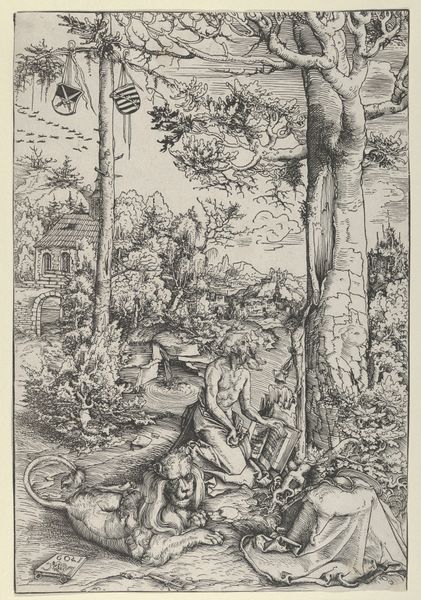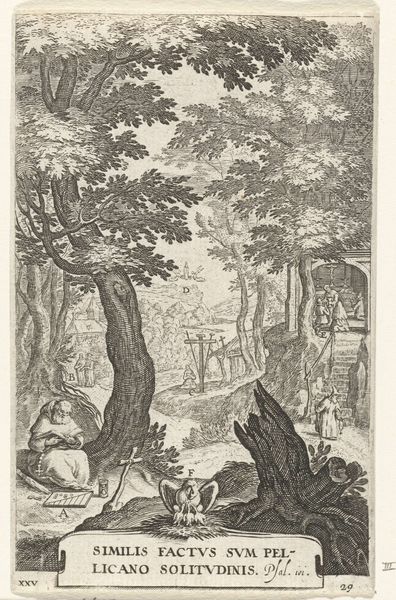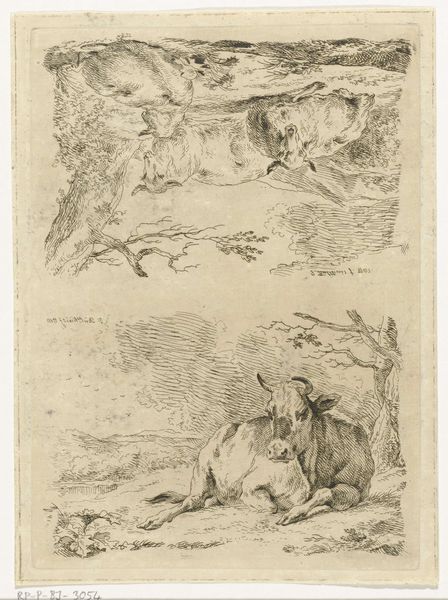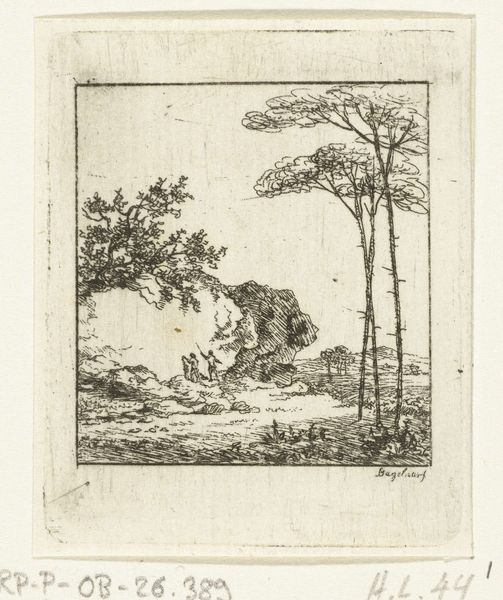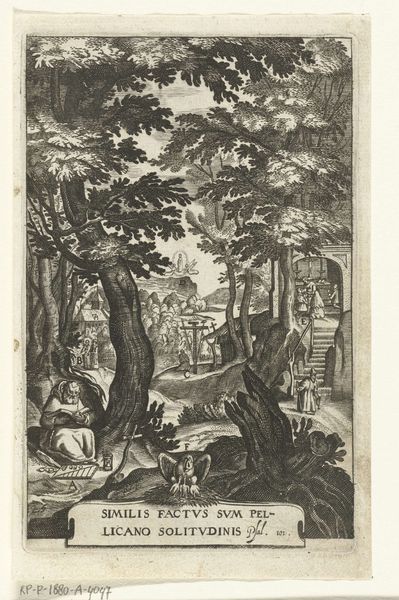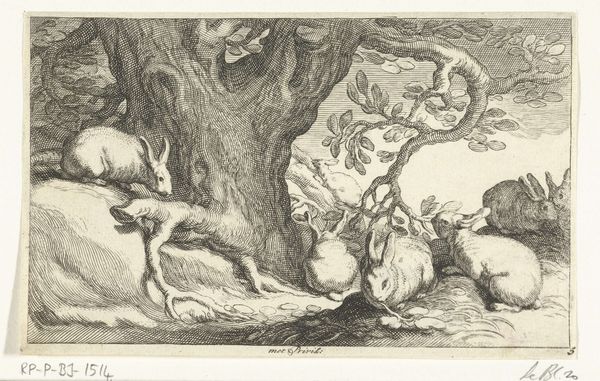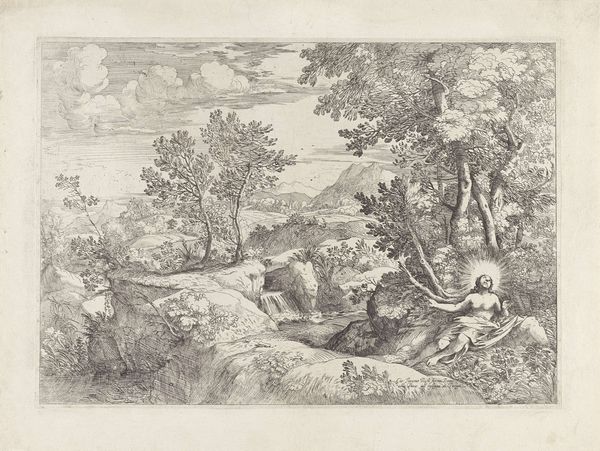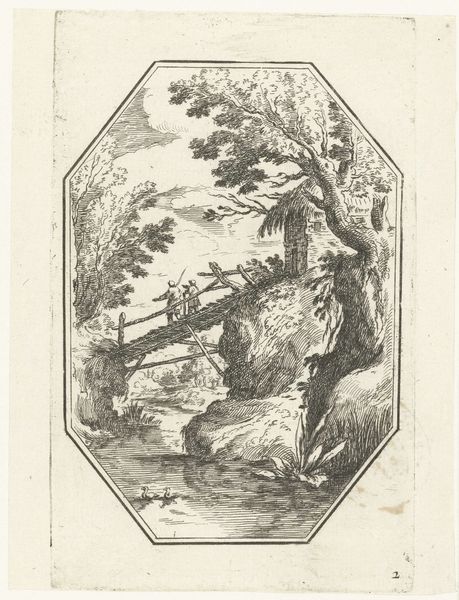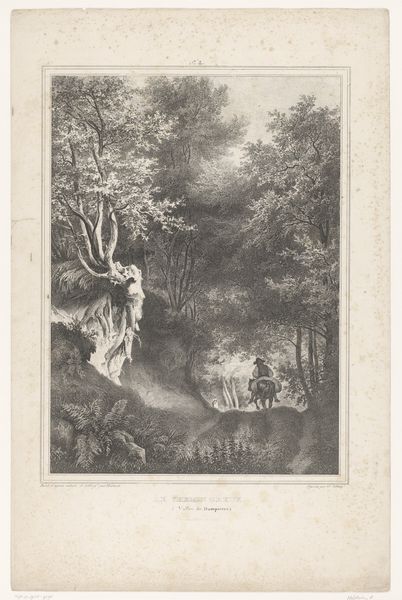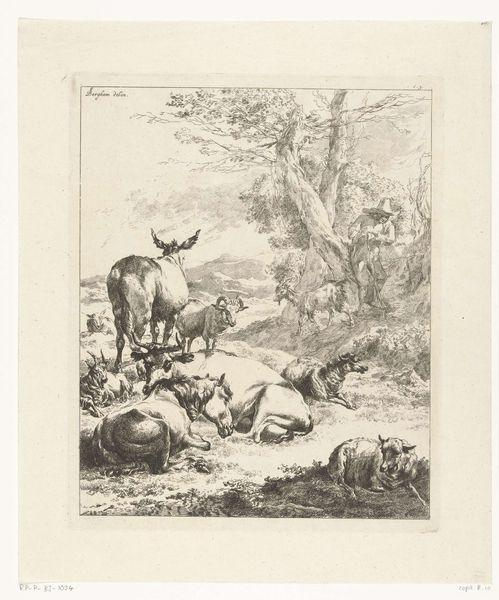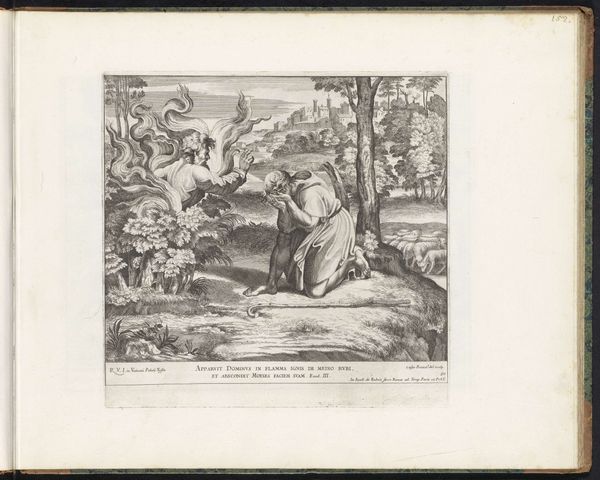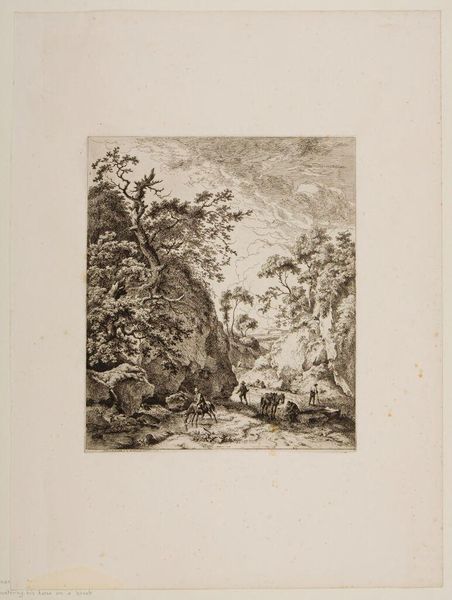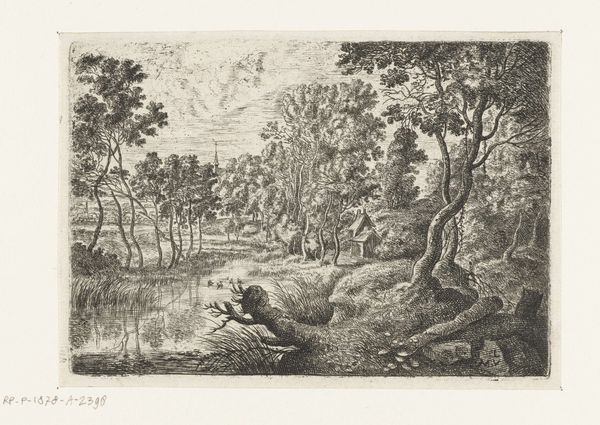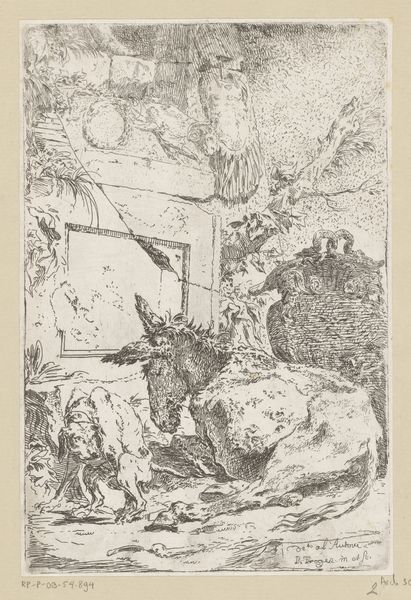
Ramskop / Zittende man aan de voet van een boom 1792 - 1810
0:00
0:00
wouterjohannesvantroostwijk
Rijksmuseum
drawing, ink, pen
#
portrait
#
drawing
#
pen drawing
#
landscape
#
figuration
#
ink
#
romanticism
#
pen
Dimensions: height 124 mm, width 260 mm
Copyright: Rijks Museum: Open Domain
Curator: Before us, we have “Ramskop/Zittende man aan de voet van een boom”, an ink and pen drawing crafted sometime between 1792 and 1810 by Wouter Johannes van Troostwijk. What strikes you first about this two-part piece? Editor: A poignant feeling of solitude. The lower half depicts a lone man resting under a tree, and his pose radiates exhaustion. The detailed ink work also really jumps out to me. Curator: Indeed, there's a noticeable contrast in the landscapes featured, that evokes a specific sentiment. I mean, the upper panel gives us a detailed study of a ram's head, almost clinical in its depiction, placed above a scene of quiet repose. Van Troostwijk seemed invested in conveying both nature's objective truth and its subjective experience. Editor: That's interesting, because that juxtaposition of animal study and seated figure really asks questions about our relationship with the natural world and our place in it, doesn't it? I also think the lower half hints at larger themes of displacement. How do you interpret this artist’s decision to put these two scenes on a single piece of paper? Curator: Considering the period, this was during a time when Romanticism was in vogue, but also during periods of massive social change across Europe that absolutely had an effect on daily Dutch life, so art took on a greater role of commenting on those realities. This drawing highlights a sort of bucolic idealism disrupted by the pressures of everyday existence, a concept that Van Troostwijk also addresses across much of his art. Editor: It makes me wonder about accessibility and audience, given the art world at the time. Curator: Van Troostwijk walked a careful path of participating in and also critiquing what would become the establishment. But he definitely also engaged the growing market of the Dutch middle class. It’s a reminder of how artworks can simultaneously reflect, shape, and even critique dominant socio-political dynamics. Editor: That context is extremely important in a fuller evaluation of “Ramskop.” Thanks for your illuminating insights. Curator: Likewise, you've opened a new avenue for seeing and interpreting the artwork in question!
Comments
No comments
Be the first to comment and join the conversation on the ultimate creative platform.
